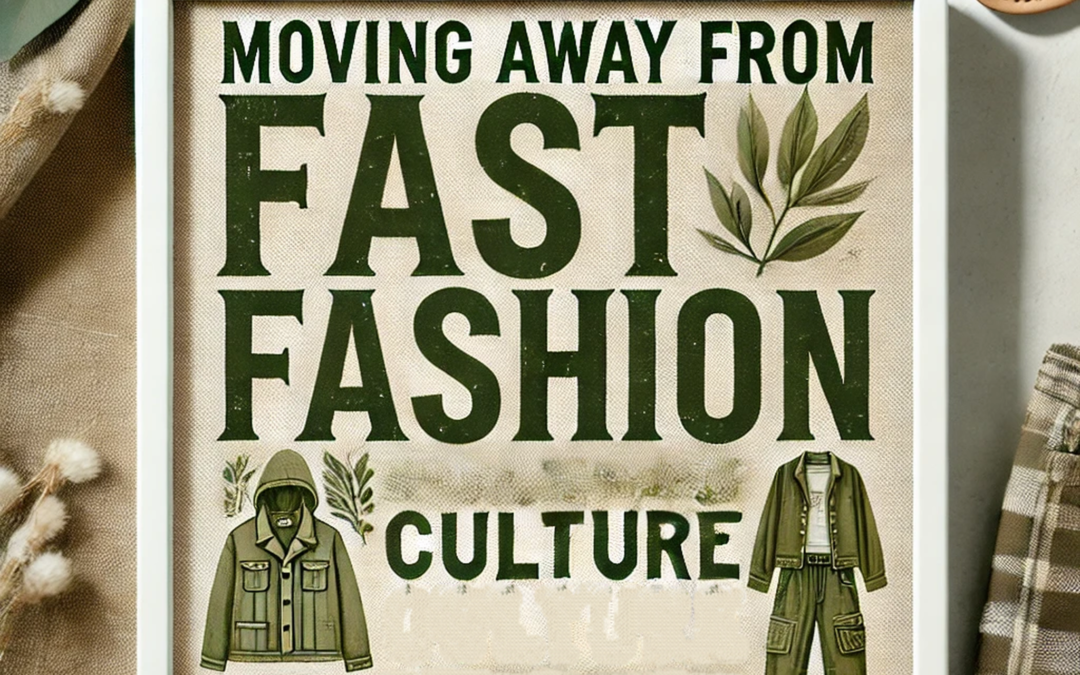
by Purba | Mar 11, 2025 | Academic |
In a world where trends change at the speed of a click and clothing is mass-produced at a rapid pace, Fast Fashion has become the norm. It’s tempting to follow the cycle of constant newness, but this culture of disposable clothing comes with a heavy price – both for the planet and for our personal style. As we become more aware of the environmental and ethical impacts of our fashion choices, it’s time to rethink our approach. “Fashion Detox” is about breaking free from the fast fashion trap and embracing a more sustainable, mindful way of dressing. Moving away from fast fashion culture is essential in third-world countries due to its exploitation of cheap labor, leading to poor working conditions and low wages. It contributes to environmental degradation, as waste and pollution from the industry disproportionately affect vulnerable communities. Overconsumption strains local resources and perpetuates unsustainable practices. Additionally, fast fashion undermines traditional craftsmanship, threatening local economies and cultural heritage. Shifting to sustainable practices promotes fair labor, environmental health and long-term economic stability. Transitioning away from fast fashion culture requires a shift in mindset, habits and consumption patterns. Here are actionable steps to help make this transition:
- Educate Yourself :
It involves gaining a deeper understanding of the impact of fast fashion on the environment, workers, and society. Knowledge can be gained by researching how fast fashion contributes to pollution, waste and unethical labor practices. And also exploring documentaries, books and articles that shed light on sustainable fashion and ethical production. Learning about sustainable materials, fair trade and circular fashion principles. The user should familiarize themselves with brands that prioritize transparency and ethical practices. Following activists, designers and organizations who promote slow fashion on social media for regular insights. By educating themselves, they can become more conscious of the consequences of their purchases and empowered to make informed decisions. Knowledge is the foundation for embracing more sustainable consumption patterns.

Educate Yoursel
- Adopt a “Less Is More” Mindset :
Transitioning away from fast fashion starts with embracing minimalism in the user’s wardrobe. Instead of chasing trends, users should focus on quality over quantity—choosing timeless, versatile pieces that last longer. A “Less Is More” mindset encourages mindful purchasing, reducing impulse buys and ensuring every item serves a purpose. This shift not only saves money but also minimizes waste and supports sustainable fashion practices.

Adopt a “Less Is More” Mindset
- Shop Secondhand :
One of the best ways to move away from fast fashion is to embrace secondhand shopping. Thrift stores, vintage shops and online resale platforms offer unique, high-quality clothing at affordable prices. Buying pre-loved fashion reduces waste, extends the life cycle of garments and minimizes the demand for new production, which is often resource-intensive. Shopping secondhand not only helps the planet but also allows the users to express their personal style with one-of-a-kind pieces.
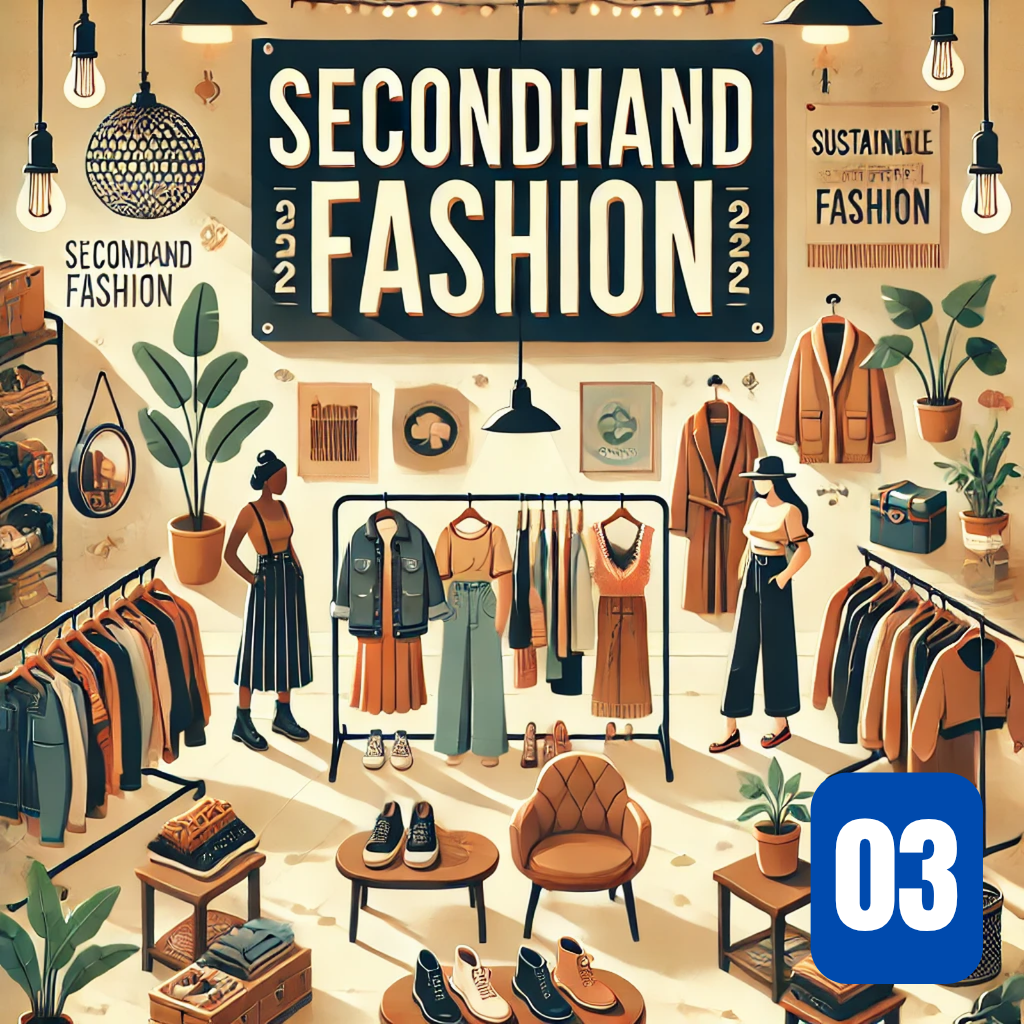
Shop Secondhand
- Support Ethical Brands :
Supporting ethical brands means prioritizing clothing companies that are transparent about their production processes, prioritize fair wages and use sustainable materials. Brands with certifications like Fair Trade or GOTS (Global Organic Textile Standard) are most applicable in this regard. Looking for labels indicating organic, recycled or ethically sourced materials. Purchasing from these brands not only ensures quality but also supports ethical labor practices and environmentally friendly production. This approach aligns user’s shopping habits with values of sustainability and fairness, helping to shift away from fast fashion culture.
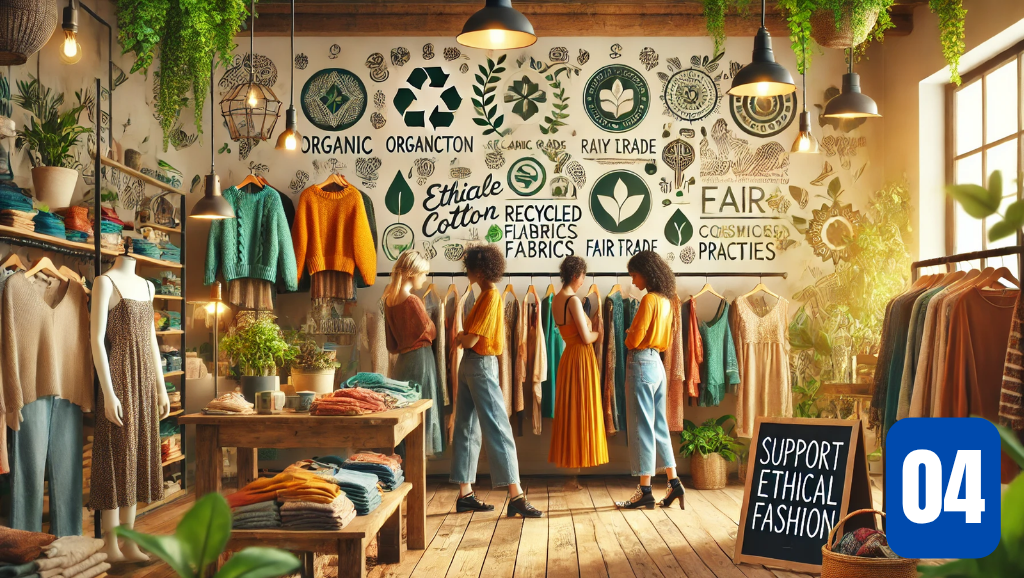
Support Ethical Brands
- Take Care of Your Clothes :
Extending the life of the user’s garments is a simple yet powerful way to combat fast fashion culture. It can be started by following care labels to wash clothes at the correct temperature and avoid harsh detergents that weaken fibers. Air-dry garments instead of using a dryer to reduce wear and tear. Mend small damages like loose buttons or minor tears rather than discarding the item. Store the clothes in a proper way by folding knits to prevent stretching and using padded hangers for delicate fabrics. Rotating wardrobe to evenly wear items and prevent overuse of favorites. Regularly clean shoes and accessories to maintain their longevity. By treating the clothes with care, a user not only save money but also reduce the demand for constant replacements, which helps the environment.
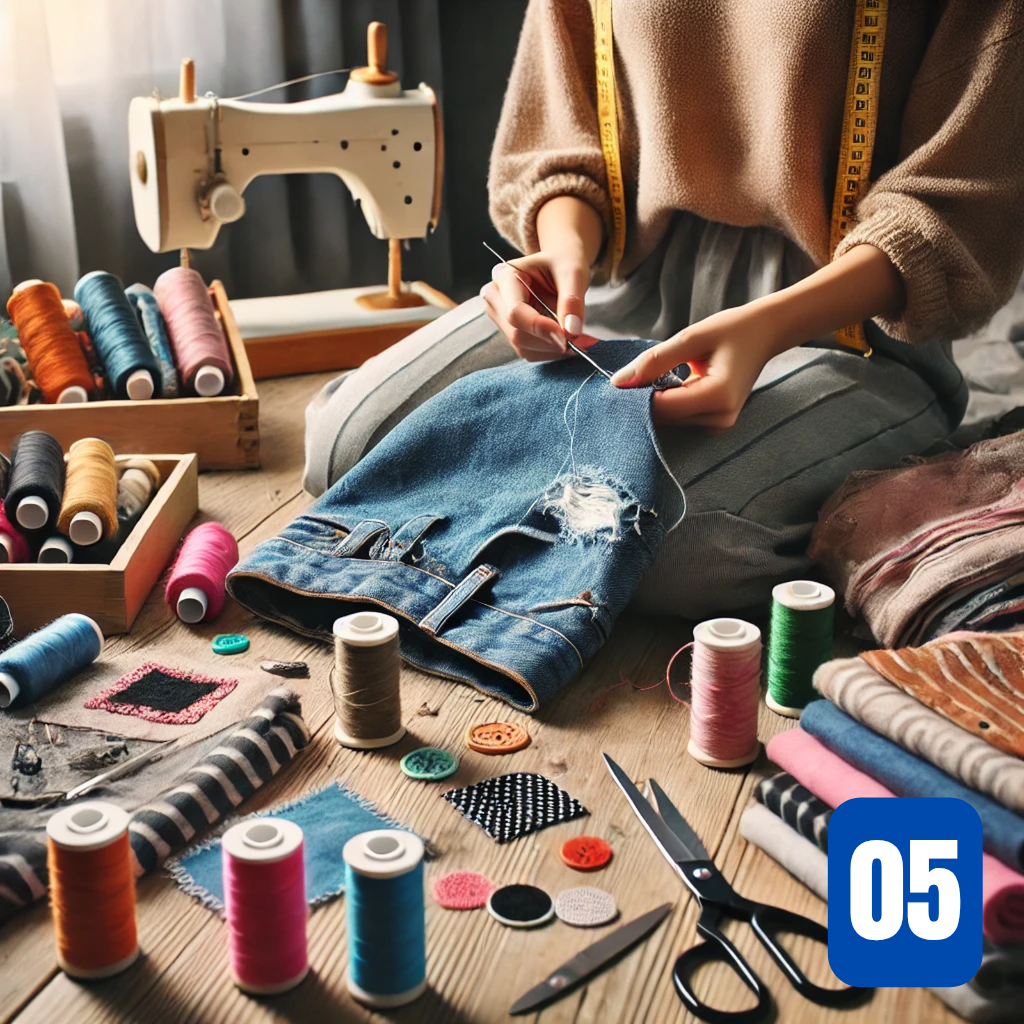
Take Care of Your Clothes
- Rent or Borrow Clothes :
It is an excellent way to reduce reliance on fast fashion while embracing sustainable practices. Instead of buying new outfits for special occasions or events, consider renting clothing from rental platforms or borrowing from friends and family. This approach allows the users to enjoy variety and style without contributing to overproduction or waste. Renting ensures that garments are reused multiple times, extending their lifecycle and reducing environmental impact. For casual or daily wear, borrowing from loved ones can foster a sense of community and sharing. By choosing this option, users can also save money and avoid cluttering their wardrobe with items that might only be worn once. Supporting rental businesses promotes a circular economy and helps normalize alternative consumption patterns.
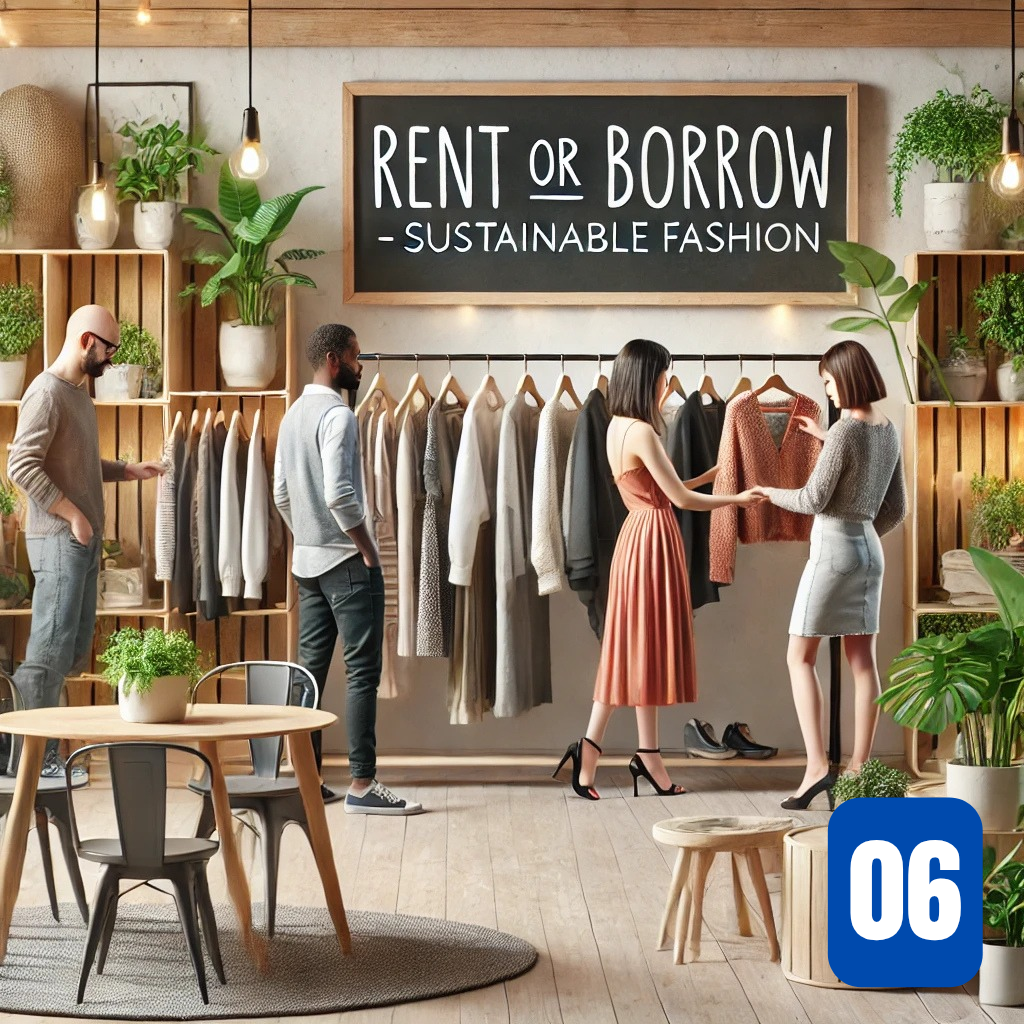
Rent or Borrow Clothes
- Be a Conscious Consumer :
To transition away from fast fashion, users should focus on being a conscious consumer. This involves carefully evaluating the brands and products they support. By looking for items that are made from sustainable materials, produced ethically and designed to last. Prioritize quality over quantity, avoid impulse purchases and choose secondhand or upcycled options when possible. Being a conscious consumer is about aligning their values with their spending habits, reducing waste and supporting ethical practices in the fashion industry.
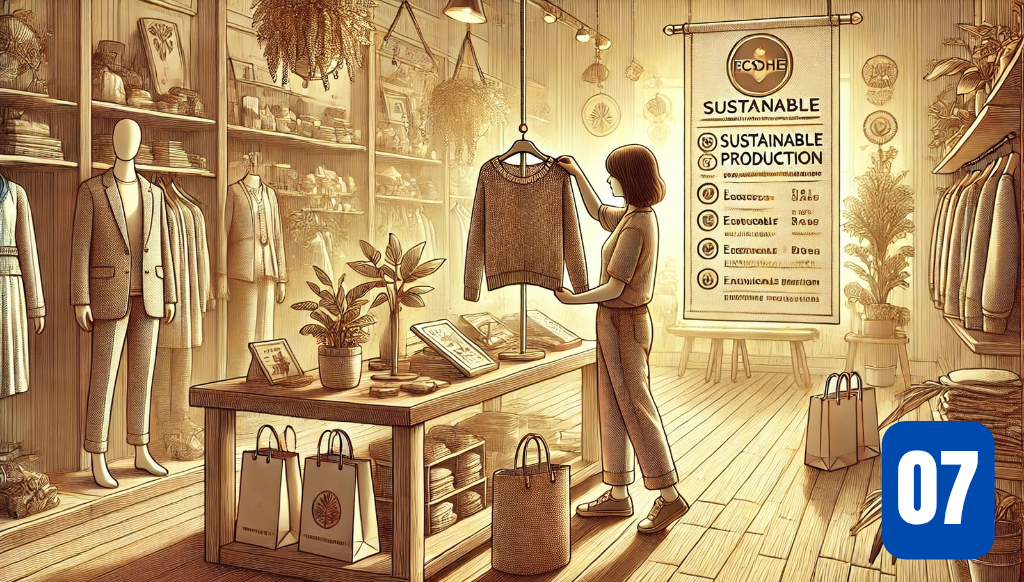
Be a Conscious Consumer
Be a Conscious Consume
- Embrace DIY and Upcycling :
It involves reimagining old or unused clothing to reduce waste and cultivate a more sustainable wardrobe. Instead of discarding worn-out or outdated items, users can transform them into something fresh and unique. This could mean turning an old pair of jeans into shorts, adding patches to a jacket or sewing decorative elements onto a plain t-shirt. Learning basic sewing, stitching or crafting skills can make this process enjoyable and rewarding. Additionally, upcycling allows the users to express personal creativity and create one-of-a-kind pieces that reflect their style. By embracing DIY, they can extend the life of their clothes, save money and reduce the demand for new fast fashion products. It’s a practical way to minimize waste and align the wardrobe with sustainable values.
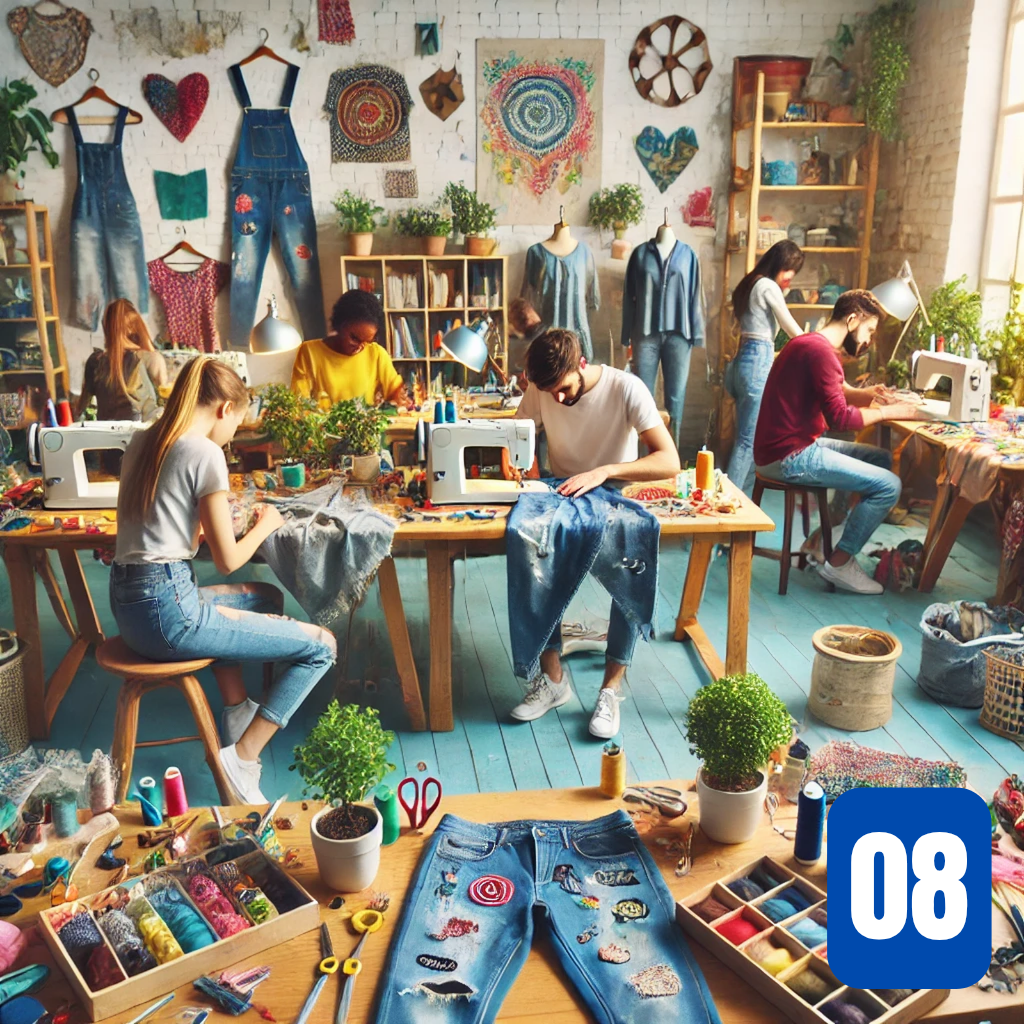
Embrace DIY and Upcycling
Embrace DIY and Upcyclin
- Spread Awareness :
That involves educating others about the environmental and social impacts of fast fashion. One can start it by sharing facts and stories on social media, emphasizing the harmful practices in garment production and the benefits of sustainable alternatives. They can also engage in conversations with friends, family and colleagues to discuss the hidden costs of cheap clothing, such as exploitative labor and pollution. Moreover, supporting and amplifying the voices of ethical fashion advocates and organizations; hosting or attending events like clothing swaps, documentary screenings or sustainability workshops. Encourage transparency by asking brands about their supply chain practices. The goal is to inspire others to rethink their buying habits and collectively demand better standards in the fashion industry.
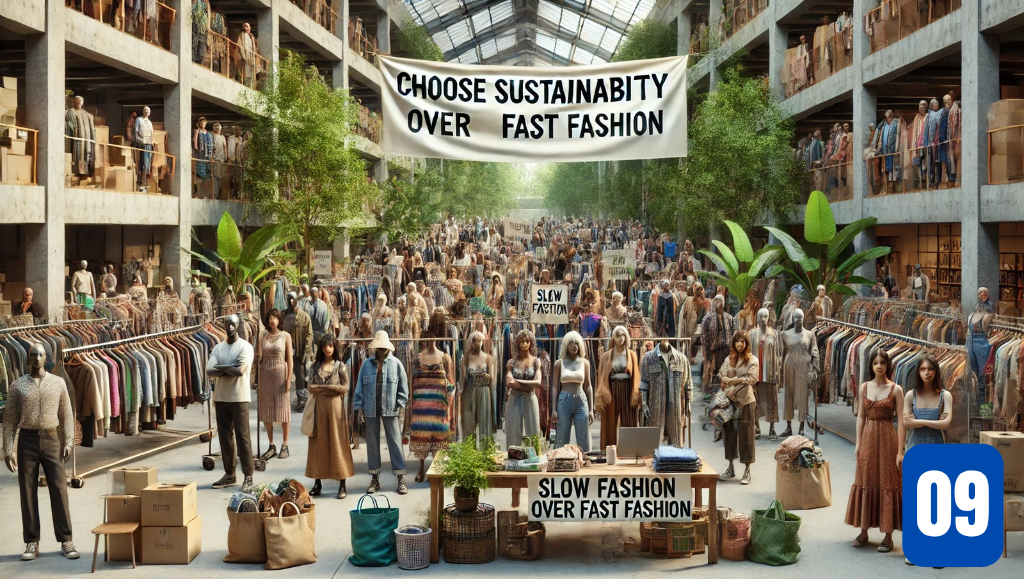
Spread Awareness
- Measure Your Impact :
It involves understanding the environmental and social consequences of users’ clothing choices to make more informed decisions. They should research the carbon footprint, water usage and waste generated by fast fashion brands. Using tools like online carbon calculators to estimate their wardrobe’s environmental impact. Analyze how often they wear items and identify pieces that go unused. By tracking their shopping habits, they can note how frequently they purchase and discard clothes. Consider the broader implications, such as labor conditions and resource exploitation behind fast fashion production. By quantifying their impact, they gain a clearer picture of how their choices contribute to global issues. This awareness can motivate more sustainable behaviors, like choosing quality over quantity and supporting ethical brands. Measuring their impact turns abstract concerns into tangible goals for reducing consumption and waste.
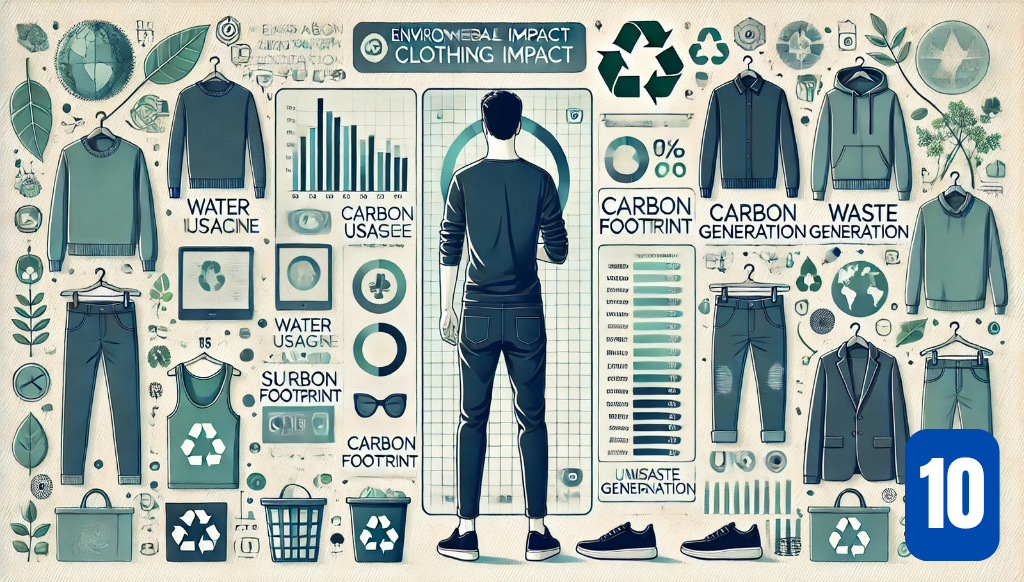
Measure Your Impact
Embracing sustainable alternatives to fast fashion is not just an environmental responsibility but also a step toward social and economic justice. By supporting ethical practices, we can empower workers, protect natural resources and foster local industries. It is a collective effort that requires mindful consumer choices and advocacy for fair policies. The journey toward a Fashion Detox is personal, but it’s one that has the power to transform both our closets and our world for the better. Transitioning away from Fast Fashion ensures a more equitable and sustainable future for all. Together, we can break the cycle of exploitation and environmental harm. Let’s choose timeless style over temporary trends and be part of a fashion revolution that values longevity over speed.
SUDIPTO BANIK
University: Bangladesh University of Textiles (BUTEX)
Dept: Textile Fashion & Design (TFD) Batch: 47 ; ID: 202116019.
Feel free to write to us at fashionnovationfd@gmail.com
Feel free to see our other articles:
Woven Futures: Fashion Beyond the Present
![Fast Fashion Vs Slow Fashion: A Case Study]()
by Purba | May 20, 2021 | Academic |
Fast fashion vs slow fashion is like yin and yang in the arena of fashion world. Though the terms are completely opposite, there is a need of sensing their difference and concretely know which means what- fast fashion vs slow fashion-what are the differences, fast fashion and slow fashion brands, which fashion to choose when, etc.
What comes to your mind when someone says fast fashion vs. slow fashion?
On the surface, fast and slow fashion seem pretty straightforward, but in reality, they can both be complex within the realm of sustainable fashion. Today we will cater you a case study on fast fashion vs slow fashion where you will find the differences and a comparative study to ponder on.
[Attention! Read the full article. There is a fun quiz to check your knowledge about fast fashion vs slow fashion]

According to Google Trends, the highest interest in this topic was in April 2009 and the second highest interest is on October 2021.
What is fast fashion?
Fast Fashion is the process of imitating trends and styles from the big-name designers on the runway which is most of the time lower quality, cheap priced and not handmade. Manufacturers mass-produce the garments at lightning speed to beat the competition and keep up with customer expectations. Since the Clothing is produced quickly and cheaply, hence we term it as fast fashion.

Fast fashion examples:
H&M, Zara, etc. retailing brands’ mass produced t-shirts, pants, etc.
Fast fashion vs Slow fashion brands:
Fast fashion and slow fashion brands also have differences according to their design, production, selling and operating criteria which enable us to do Fast fashion vs slow fashion brands comparison.
A list of fast fashion brands:

Interest in the ‘Fast fashion’ topic according to Google Trends. Source: Screenshot taken from Google Trends.
What is Slow Fashion?
Slow fashion is about conscious shopping and wearing clothing with sustainability in mind. It is about designing, creating, and buying clothing that last a long time. Here quality matters over quantity and since the process takes place slowly, we term it as slow fashion.
`

Dhakai Muslin, an example of slow fashion
Slow fashion examples:
Handmade classical products like Jamdani, Dhakai Muslin, Nakshi kantha, etc. Moreover vintage and second hand clothes are also a part of slow fashion.
Slow fashion history:
The term ‘slow fashion’ is not so old. In fact, this term emerged in the year 2007 when journalist Kate Fletcher, a fashion and sustainability pioneer, coined the word “slow fashion” in an article published in the British publication-The Ecologist.
`

The photo of Kate Fletcher who coined the term ‘slow fashion’. Her name is now attached with the history of slow fashion.
Actually, the concept of slow fashion is inspired from the Slow Food Movement founded by Carlo Petrini in Italy in 1986 which links pleasure and food with awareness and responsibility.
After her coining out this term, it became a world trend and talk of the fashion world.
Is slow fashion more sustainable than fast fashion?
Slow fashion promotes a slower, steady and more sustainable approach as it is hand-made with sustainable raw materials like lotus, banana, orange fiber and promotes the use of vintage or second hand clothes, upcycling old clothing materials. It decreases carbon footprint and takes care of the 3Ps of sustainability- People, planet and profit.
Comparing the benefits of slow fashion and fast fashion
- Slow fashion reduces the consumption of resources and the amount of wasteland people can wear for a long time because they are made up of durable materials but is not cost efficient.
- Fast fashion quickly responds to rapidly-changing fashion trends and consumer tastes.It carries high-end designs to the masses at affordable price ranges.

Fast fashion vs slow fashion Google Trends. The interest and talk of fast fashion was always more than slow fashion from the beginning. Source: Google Trends.
Let’s compare the problems faced
- In Slow fashion small quantities are produced at low speed and hence are not able to compete with the economy of scale strategy. And generally, the products are more expensive than the commodities.
- Due to the greater manufacturing speed, the factories are likely to neglect the working conditions. The low quality and low pricing of the products results in the increase of fashion waste
Comparing the production schedules
Slow fashion has 2-3 cycles per annum whereas fast fashion has approx. 50+ cycles per annum. We can clearly see the production scale of fast fashion is near 25 times of the slow fashion !!!
Comparing the fashion sales
We can see the graph of slow fashion is very low at the beginning, but gradually the graph of slow fashion can be seen increasing, which means slowly people are understanding the importance of slow fashion. Though the graph of fast fashion is increasing rapidly because people always prefer cheaper prices over quality clothing.

Fast fashion vs slow fashion in India (USD Million).
|
Fast Fashion |
Slow Fashion |
| Production |
Rapid and mass production |
Slow and deliberate production |
| Design Approach |
Trend-driven and short-lived designs |
Timeless and enduring designs |
| Manufacturing |
Outsourcing to low-cost labor countries |
Emphasis on local, ethical manufacturing |
| Material Selection |
Synthetic materials and low-cost fabrics |
Natural, organic, and sustainable materials |
| Environmental Impact |
High pollution and waste generation |
Focus on sustainability and eco-friendliness |
| Consumer Behavior |
Impulse buying and frequent purchases |
Conscious consumption and fewer purchases |
| Supply Chain |
Lack of transparency and unethical practices |
Ethical sourcing and transparent supply chain |
| Social Responsibility |
Exploitation of low-wage workers |
Fair wages and labor rights |
| Longevity |
Disposable fashion with short lifespan |
Durable garments designed for longevity |
A table showing the differences between fast fashion and slow fashion.
Conclusion
After looking at the facts & surveys we can say that:
- Fast fashion creates a lot of wastage and hence is quite harmful to the environment hence slow fashion should be promoted more in order to maintain sustainability
- But when looking at the prices fast fashion is more preferable due to it’s cheaper prices.
But in the end, it depends on what the customer wants and what he prefers. It has to be either quality products/cheaper prices.
Nandini Kapu
Student at NIFT- National Institute of Fashion Technology
(NB. This article was written by Nandini Kapu. It has been updated and will be updated by Fashionnovation whenever we find new relevant information to make it rich so that the information best serves you. So, stay with Fashionnovation!)
You can also read another of our premium article on Fashion in the 21st century here!
Fashion in the 21st Century
Related articles:
Bimbo Fashion
If you want to know the most influential US fashion Brands and Germany Fashion Brands, you can click accordingly!
Feel free to write to us at fashionnovationfd@gmail.com
We accept guest posts!
![Fast Fashion Vs Slow Fashion: A Case Study]()
by Purba | May 8, 2021 | Top fashion news |
In this era, to be “out of fashion” is indeed to be out of the world. Why so? Well, we already know the reason. Fashion, which is as old as time and as new as tomorrow, is one of the most powerful forces in our life. It influences every sector of our lifestyle. So, to understand the living, breathing and evolving transformation in fashion industry is a need of the hour!
Although the Fashion Industry is considered to be the most glamorous and dynamic fields in the world, it is also difficult, demanding and unpredictable.
Despite the enchanting interplay of creativity, business hype and marketing wit, everything comes down to the bottom line if the fashion companies can’t get profit up to the mark.
In recent years, the fashion industries have undergone dramatic restructuring. The industry does not resemble the one that existed 20 years ago.
Just as fashion products change, the industry itself keep revolving. However, we have seen fashion retailers competing with each other to provide newly fashion trends revealed by fashion shows and runways.
Here are some factors which are driving the transformation in fashion industry:
Elevation of mass production
Prior to the mid 1980s , success in the fashion industry was dependent on low cost mass production of standard designs that did not change often due to the design restrictions of the factories. Evidently, consumers during that time were less conscious of style and fashion and mostly preferred basic apparel or wearings.
Fashion garments began to be mass produced towards the mid-20th century. People began to have more choices of garments as the bulk of production increased.
At the end of the 20th century, fashion awareness among people raised on the top, and they began to choose comfy as well as stylish clothes for themselves, instead of counting on the trends prevailing in the market.
Fast Fashion
Fast fashion is a very known term that has allowed anyone to dress following the latest trends whether he or she has the least of fashion sense.
Spending a little amount but dressing in a different way has become the norm for most people in the last two decades, and that is the reason driving the success of the “fast fashion” trend.
Customers love to see various products or designs every month and this has led to an increase in the demand for new fashion collections over a smaller span of time. And so, to be profitable in the industry, apparel retailers need to take the ‘speed to market’ approach to make profit on fashion that is not in the stores of their competitors.
By emerging small collections of merchandise, fashion retailers encourage consumers to visit their stores more frequently with the idea of ‘Here Today, Gone Tomorrow’. And it surely indicates a shorter life cycle of a particular design or a garment.

Difference in the styling of apparels. Courtesy: Pinterest.
Technological Impact
There was a time previously when the creation of garments required much time and skill, whereas today they are realised within a matter of minutes.
However, today is a combination of all techniques to have been practiced until now. Such as, some designers love to work with the very ancient spindle techniques for their woven styles, but might use a 3D printer for their footwear or ornaments.
The development of technology gives designers a wide choice of techniques to use and it arises constant opportunities. Moreover-
- Nowadays traditional design methods are being replaced by CAD (Computer-Aided Design), CAM (Computer-Aided Manufacturing) or many other designing platforms which minimizes the time of sketching on paper, draping fabrics on mannequins or having a proper measurement. And so these technologies allow the designers to make any kind of changes required for the desired silhouette or fabric trimmings.
- For having a true-to life garment visualization or virtual sampling, we can now easily use some 3D designing software like CLO, Marvelous Designer, MAYA, TUKA 3D etc. Most of our fashion industries get benefited from these 3D garment simulations; as these have gradually reduced the machinery cost or labour cost.
- High-intensity lasers or computer-guided knives are a great replacement of traditional pattern making system as one can get many layers of fabric all at once. But these technologies are mainly used in making expensive apparels.

Pattern making. Courtesy: Pexels.
The assembling of ancient and modern techniques depicts that designers can choose the most sustainable options, and drive the evolution of fashion towards sustainability.
Online shopping & E-commerce for smoothing the digital transformation in fashion industry
Today’s digital world is more and more interconnected with our fashion industry. Digital platforms are becoming prevalent in the fashion market. Every now and then we can see many new brands are emerging with the development of e-commerce, which allows companies to engage consumers through virtual reality.
- The global pandemic (COVID-19) has transformed the way consumers behave and made it amply clears how technology can be lifted to accumulate sales even when consumers are locked in their homes.
- Another withholding factor to the rise of e-commerce is the availability of smartphones and devices. Moreover, there is a huge upsurge in 4G and 5G adoption, which indicates a developed infrastructure of a country.
- While renowned fashion businesses have already joined the e-commerce bandwagon, small shops or boutiques are now also seen entering the homes of prospective buyers via fashion apps, social media pages and garnering followers. As a result, customisation has evolved; creating one’s own shopping basket, having discounts and loyalty points on shopping sites have now become a rewarding experience.
- During this social media era, the fashion industry is experiencing the increasing role of influencers, as consumers look at their lifestyle as more authentic and attractive than habitual advertisements. Influencers are considered as close to the common people because they are not models and are not forced to make a campaign, but wear what they like and what flaunts their body well; they also show their outfits during regular days or in common. Thus it gets easier for ordinary people or customers to adopt the trend followed by the influencers.
The adoption and popularity of e-commerce have manifested that being digital is the only way forward. As consumers build on their impulses, fashion platforms need to up their game to personalize their offerings to the varied tastes and build predictability within their boundaries, to better purchase experiences.

Customization of a particular attire brings the transformation in fashion industry
Personalization:
Consumers have become more squeamish and more demanding during the last few years. It builds a high expectation for quality products among the consumers. They choose fashion items according to their values and their personal style. To cope up with the expectations, fashion companies have to understand how to offer product that customers will perceive as unique. Many fashion companies have followed this trend by enlightening their product portfolio and becoming more and more “multi-style brands”.
Sometimes the company has to think about what is the difference that makes the product of a brand incomparable for both customers and competitors. A wrong choice can instantly destroy the brand reputation, thus they have to be very careful with the selection.
The fashion industry is one of innovation, vision and diversity. And of course, we do not need a reminder of this, but in the fast pace of life, it can be easy to get caught in the rapid movement of our works with all the deadlines and trends. We need to juggle with our innovative ideas, customer feedback and our internal communications as well as to create beautiful and sustainable garments as quickly as possible, following the brand’s image and values.
By Team Saturnine,
Mentor: Tanvir Ahamed Fahad; Id:2018-1-6-026
Leader: Atkia Faiza; Id: 2019-1-6-020
Executive: Md. Asaduzzaman Ovi; Id:2020-1-6-020
Dept: Textile Fashion & Design
Photo References:
- Image 1: Unsplash
- Image 2: Pinterest
- Image 3: Pexels
- Image 4: Pexels
You can also read another of our premium content on Fashion in the 21st century!
If you are interested in architecture and fashion, you can also read Architecture Fabric: The New Use of Textiles as A Building Material
Cybersecurity in Fashion: How SpamTitan Helps Protect Fashion Brands from Cyber Threats
by Purba | Sep 27, 2020 | Top fashion news |
What is fast fashion?
Fast fashion is a type of fashion which is cheap and trendy clothing and where the samples ideas are gathered from the catwalk or celebrity culture and are turned into garments. So we can say that fast fashion has 3 components from the consumers perspective. It’s cheap, trendy and disposable. So it makes clothes affordable to people.
History of fast fashion
But there is a history behind this phenomenon of fast fashion. Until the mid-twentieth century the fashion industry worked for four seasons in a year. The designers predicted that what would be the choice of customers and relying on this they would work many months in advance. But this method changed drastically in the 1960s and 1970s. During this time, the young generation started to create new ideas using cheap material and this also created new trends. Although most fashion brands tried a lot to get any idea of keeping up with the increasing demand for affordable clothes, but still there was not a fishy distinction between the high-end and high street fashion. Then finally in the late 1990s and early 2000s, fast fashion became a booming industry in America with people enthusiastically partaking in consumerism.
Fashion in the 21st Century
Popular fast fashion brands
There are some popular fashion brands that helped fast fashion to start and still they are related to this and also adding many new brands. Such as Zara, Asos.com, Inditex, Fashion nova, C&A, H&M, Boohoo, Forever21, New Look etc.
In this world, everything has some merits and demerits. Fast fashion is not out of this matter too.
Benefits of fast fashion
The benefits of fast fashion are clear. It’s inexpensive clothing.bIn response to the latest trend it is produced to mass market retailers. It also helps to try different styles and trends in a short time without having much change in budget.
Disadvantages of fast fashion
There are some disadvantages too. It’s unsustainable. Most of the time the focus lies on imitation of original products. Thus it misleads the customers. Again use of cheap, toxic textile dyes has become a cause of pollution of clean water globally after agriculture.
Fast fashion and Bangladesh
There is a close relation between fast fashion and Bangladesh. Fast fashion retailers cannot easily own the factories that supply them with their wares. Alternatively, a huge part of garment and footwear orders are outsourced to suppliers in emerging markets like Bangladesh, where overhead is cheap and the cost of human labor is cheaper.
Fast fashion as career
The fact about fast fashion as career can be said that the jobs fast fashion creates are not good enough. Because deaths and injuries are common in our industry, from the infamous Rana Plaza factory collapse to the lesser known but constant truck accidents which injure, kill, and hurt garment makers on their way.
But over the past few years, fast fashion has established itself in an extremely hot segment and become a source to help some clothing companies to increase and be stable on their economic growth.
The merits and demerits of fast fashion is a matter of a never ending argument. So we need to find a way to balance between fast fashion and sustainable fashion.
Nahema Haque Khushi
Department of Textile Fashion and Design,
Bangladesh University of Textiles,
Id: 2020-1-6-002
Read our well researched case study on fast fashion vs slow fashion!
Fast Fashion Vs Slow Fashion: A Case Study











